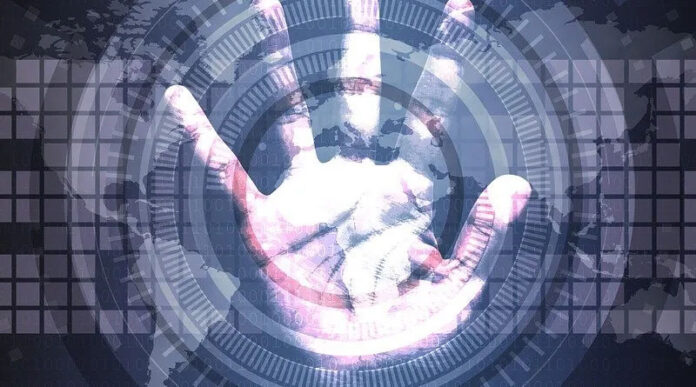Our daily lives, our way of working, and our communication have all changed dramatically because of the digital age’s unleashing of innovation and connectedness. However, the ongoing and constantly changing threat of cyberattacks has also emerged as a significant challenge because of this amazing progress. It is obvious that a new strategy based on a shared commitment to compliance is required as the cyber landscape grows more dangerous.
Attacks by cybercriminals have become all too common, and their sophistication and scope are growing. The ramifications are severe whether the threat comes from nation-state actors trying to compromise vital infrastructure, cybercriminals holding companies hostage, or hackers taking advantage of weaknesses to make money. They tamper with data integrity, interfere with operations, and occasionally endanger national security.
The proverb that states, “an ounce of prevention is worth a pound of cure,” is more applicable today than it was ever before, in the field of cybersecurity. To prevent cyberattacks, proactive steps and strict adherence to compliance requirements are essential. This calls for a paradigm change, for seeing cybersecurity as a shared responsibility as well as an IT problem.
As we navigate this complex terrain, we must view compliance not as a burden but as a shield—our first line of defence against the ever-evolving threats of the digital age. Compliance is the foundation on which we build a collective defence, and by doing so, we can ensure a safer, more secure digital future for all
Cybersecurity compliance standards establish a set of best practices and guidelines to mitigate risks and offer an organised framework to protect against cyber threats. However, compliance is not just a checkbox exercise; it is the foundation of a strong cybersecurity posture. These standards can vary by industry and jurisdiction.
Regular software updates, strong access controls, and meticulous incident response plans are among the measures that must be implemented to meet compliance requirements. Demanding, adherence to these standards can significantly lower vulnerabilities and improve the cyber resilience of an organisation.
For instance, the Payment Card Industry Data Security Standard (PCI DSS) mandates stringent security measures for companies that handle credit card information. The USA’s Health Insurance Portability and Accountability Act (HIPAA) sets guidelines to protect patient data in the healthcare sector. Similarly, the General Data Protection Regulation (GDPR) in Europe is a global standard that focuses on data privacy.
Effective cybersecurity is a shared responsibility, not an individual one. Every stakeholder; governments, companies, and people; have a responsibility to fulfil. To counteract cyber threats, government organisations need to create clear regulations, encourage information sharing, and support global cooperation.
Large amounts of sensitive data are in the hands of businesses, who look after it. To secure this data, maintain the privacy of their customers, and protect their business, they must rigorously apply compliance standards. Instead of being merely considered as a budget line item, cybersecurity needs to be integrated into every aspect of business strategy.
Additionally, each user has access to a multitude of digital portals. In the collective defence against cyberattacks, fundamental procedures like creating strong, one-of-a-kind passwords, updating software frequently, and being alert for phishing attempts are crucial.
Although compliance is essential to cybersecurity, there are difficulties with it. Due to the dynamic nature of the cyber threat landscape, compliance standards must quickly change and adapt. Furthermore, firms may experience compliance fatigue due to the overwhelming amount and complexity of regulations.
Regulatory bodies need to find a balance between practicality and strict requirements in order to handle these challenges. Organisations should be encouraged to take a risk-based approach to cybersecurity, and compliance standards should be flexible enough to keep up with new threats.
Boundaries are irrelevant to cyberattacks, which take advantage of the gaps in compliance standards and regulations. Hence, it makes sense and is even necessary for us to mount a collective defence. This effort relies heavily on cooperative cybersecurity initiatives and information-sharing platforms, like the US-based Cybersecurity and Infrastructure Security Agency (CISA).
International cooperation is vital, given the borderless nature of cyber threats. As cyberattacks increasingly blur the line between criminal activity and state-sponsored actions, a unified global response is essential. The development of international agreements and norms for responsible state behaviour in cyberspace is a step in the right direction.
In the fight against cyberattacks, incentivizing compliance is a powerful tool. Governments can consider tax incentives or liability protections for businesses that invest in robust cybersecurity. Cyber insurance can serve as a safety net, encouraging businesses to bolster their cybersecurity defences.
Additionally, consumers and stakeholders can influence organizations by demanding transparency and accountability in cybersecurity practices. Trust is an invaluable asset, and businesses that prioritize data security and privacy will not only protect their clients but also gain a competitive edge in the market.
Cybersecurity is not an isolated issue but an intricate web that binds us all. The prevention of cyberattacks demands a collective commitment to compliance, collaboration, and the safeguarding of our digital ecosystems.
As we navigate this complex terrain, we must view compliance not as a burden but as a shield—our first line of defence against the ever-evolving threats of the digital age. Compliance is the foundation on which we build a collective defence, and by doing so, we can ensure a safer, more secure digital future for all.























